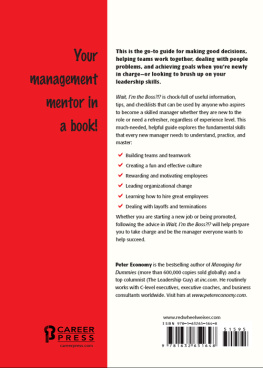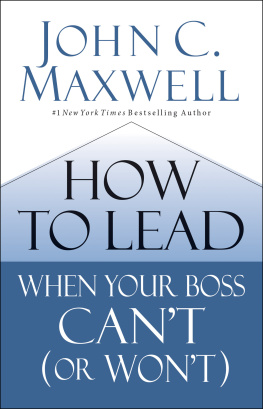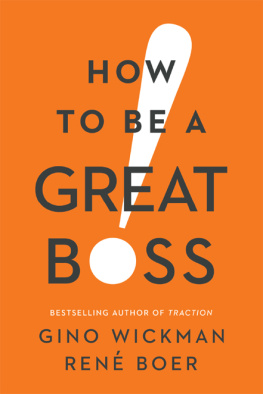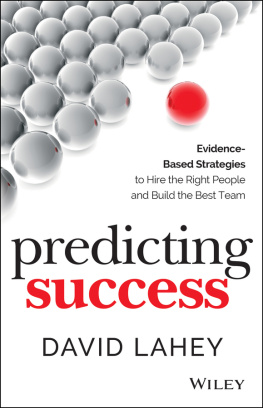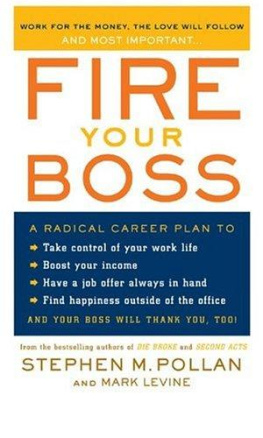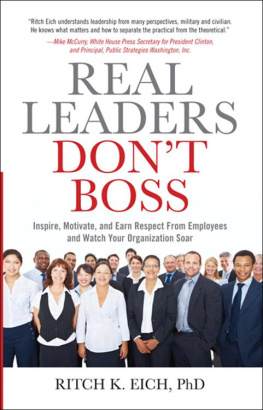I would like to thank several people for their support and input in the creation of this book.
My publisher, Jack David from ECW Press, kept me moving along and was most helpful in the process, timing and delivery. Jack, thank you. To my team at Predictive Success and all the wonderful clients we have worked with across North America, thank you. Thank you for the trust of allowing me to consult and work with your dreams and business goals.
To my business partners at the Predictive Index LLC, www.predictiveindex.com, Mike Zani and Daniel Muzquiz. These two visionary software leaders are creating a new category, Talent Optimization, www.talentoptimization.org, which will unleash new levels of productivity for leaders everywhere. Both of you and your company create a better work and better world environments for thousands of organizations globally each and every day. Thank you.
Lastly, to my first bosses, my departed mother, Shirley, and father, Orville. You both just cared, supported, challenged, nurtured and celebrated with me. Your impact has lasted all these decades later. I can only pay it forward to thank you.
Chapter 1
Getting to Best Boss Status
The best leader is the one who has sense enough to pick good men to do what he wants done, and the self-restraint to keep from meddling with them while they do it.
Theodore Roosevelt
Many of us will finish our lives having worked for 90,000 hours a third of our turn on this planet. More alarming: many of us will spend those working hours at jobs we hate under the supervision of bosses whose power to inspire is lacking. What a shame. We work in order to buy things and enjoy experiences and fill our lives with pleasure and comfort. Such aspirations are critical to creating a better existence for those who aspire to live in North America. Having a job you love and a boss you like is key to making this 90,000-hour investment a fruitful one. My life has included lots of fruit. In fact, I had one job, as an enterprise manager at Microsoft, that was such a thrill that I never knew when quitting time was, seldom watched for long weekends and was quoted as saying I would take two bullets for my boss. This was nirvana: a job that suited my personality and a boss Randy Lenaghan who allowed me to just do it. Randy was a mindful boss, aware of the buttons to push with his employees, a Chief Talent Optimizer of the talent of his team. Pure joy.
Connecting business strategy to business results
Randy understood that well-run business units and companies have a business strategy thats linked to an expectation of nominated business results. He knew what we all need to know: that to be successful, companies need to acknowledge that people are at their heart, and that leaders need to understand the piece about aligning them with a business strategy. This is the journey to Talent Optimization, and everyone should take it: www.talentoptimization.org.
A business can create key success criteria, but at the end of the fiscal year, the determination of success relies on whether the people in the business performed. The most successful companies are the ones that were able to put the best people in the right positions.
Rewinding back to the beginning of the fiscal year, that same business will have set out to develop a strategic plan that can set them up for these successes. The sweet spot, then, is in that region between the business strategy and the business results. How do companies ensure they are setting themselves up for success?
Talent optimization is a four-part discipline that gives companies the ability to diagnose their business, design their strategy, hire the right fits for jobs and inspire these individuals to stay and grow with the company.
People must be aligned with the business strategy in order for the company to achieve its goals by year end.
Talent optimization isnt about developing a new business strategy. We like the way the Boston software firm, the Predictive Index LLC, has laid it out below. What gets in the way of a leaders business results is its lacking of three essentials: a proper diagnosis for job models, an appreciation for hiring with purpose and the best possible data to inspire employees to crush the business results. The people section often gets ignored and this hampers leaders and business units chances of beating their numbers.
The world today awash in jobs but without enough people to fill them is in an envious spot. Or at least it might seem that way at first blush. In point of fact, the scene is a frustrating one for managers, whose ongoing pursuit of players sees them in constant hiring mode, forever chasing workers willing to hang around long enough to make all the effort worthwhile.
Heres where the concept of talent optimization earns its stripes as a game changer.
Talent optimization is the link between a companys business strategy higher quotas, increased sales, more good done, less pain caused, fewer risks taken and the end result it seeks, say, twelve months later lower risks, fewer accidents, decreased operational costs, higher revenues. It is the magic in the middle of these points, and it begins with taking an intentional and data-driven approach to getting the people part right.
As a business leader, its your job to ensure that your company puts your talent into an optimal position for producing desired business results and besting the competition. Talent optimization is the relatively new term that exploits the relatively old considerations of people, process and technology and uncovers the connection between business strategy and its results. Its a different way to understand how people fit into a broader business plan and to optimize output and productivity to achieve impressive results. In this bridge between strategy and outcome, this process facilitates designing jobs with purpose and then hiring for them in an agreed-upon and because your managers are helping you create the models consistent way.
Talent optimization also protects against employee disengagement, the scourge of the productive office. This widespread issue (by some measures, more than 70 percent of employees in the US are disengaged), whose hallmarks are poor productivity, absenteeism, poor client service and toxic workplace cultures, deprives organizations of billions of dollars.
At a certain point, every manager needs to appreciate that theres a better approach to staffing their ranks than what theyve taken up to now, that they cant just keep hiring this person and that, posting jobs on Indeed, giving somebodys golf buddy or squash pal a try. On the one side of the equation, theres no question that managers have biases. And on the other, theres no question that jobs still need to be filled according to skills and will. So whats missing? The proper job models. An analytic process thats predictive and prescriptive and that maps jobs for the best chances of success. And a way to design them so theyre mindful of external pressures, like having to hire someone by year end to get a bonus. Indeed, these are the things most likely to make a boss steamroll over whatever model they had in place, just to jump from business strategy to results and skip the middle parts. Its one of the things I see that frustrates me the most.



